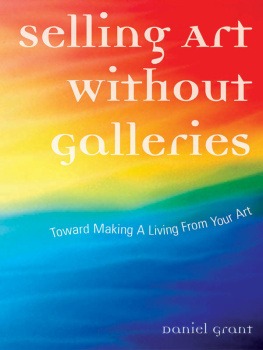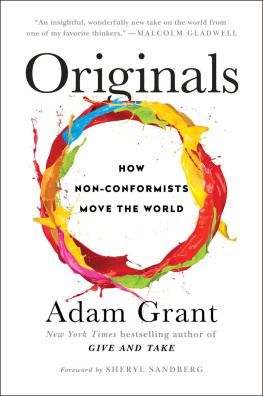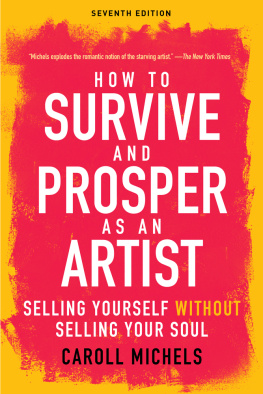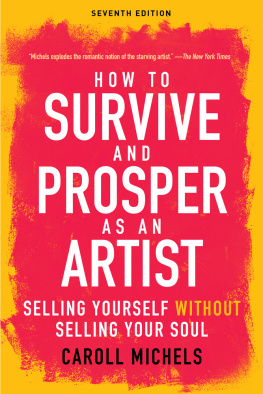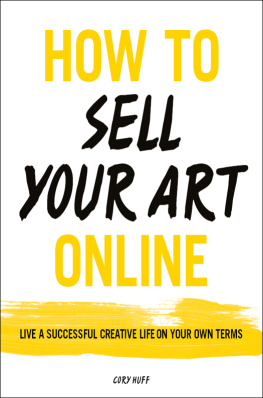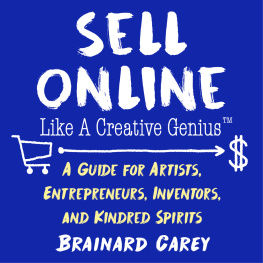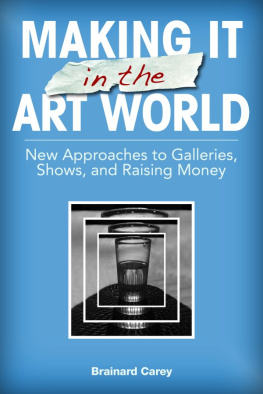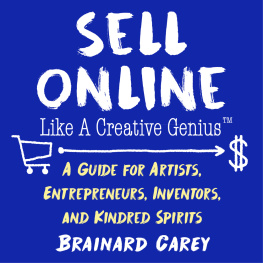
Toward Making A Living From Your Art
Daniel Grant

2006 Daniel Grant
All rights reserved. Copyright under Berne Copyright Convention, Universal Copyright Convention, and Pan-American Copyright Convention. No part of this book may be reproduced, stored in a retrieval system, or transmitted in any form, or by any means, electronic, mechanical, photocopying, recording, or otherwise, without prior permission of the publisher.
10 09 08 07 06 5 4 3 2 1
Published by Allworth Press
An imprint of Allworth Communications, Inc.
10 East 23rd Street, New York, NY 10010
Cover design by Derek Bacchus
Interior design by Dianna Little
Page composition/typography by Integra Software Services, Pvt. Ltd.,
Pondicherry, India
ISBN-13: 978-1-58115-460-3
ISBN-10: 1-58115-460-7
ISBN 9781581158236
Library of Congress Cataloging-in-Publication Data:
Grant, Daniel.
Selling art without galleries: toward making a living from your art/Daniel Grant.
p. cm.
Includes index.
ISBN-13: 978-1-58115-460-3 (pbk.)
ISBN-10: 1-58115-460-7 (pbk.)
1. ArtUnited StatesMarketing. I. Title.
N8600.G71 2006
706.8dc22
2006026630
Printed in Canada
Table of Contents

Introduction

For many up-and-coming artists, the goal is to get into a gallery. That is not necessarily synonymous with selling ones work or supporting oneself from those sales, but it is easy to get lost in the idea that a gallery equals prestige, art world acceptance, and a ready group of buyers. Certainly, galleries stay in business because they do sell artwork, but not every artist they show or represent makes out as well. Lots of gallery shows take place that do not result in sales or reviews; they may not be advertised or memorialized in a catalogue (two expenses that dealers increasingly have cut back on), and the exhibiting artists may find themselves out the cost of framing, shipping, and insurance (dealers have cut back there, as well). Many places that call themselves galleries primarily make their money as poster or frame shops, with original art as a sideline. Added to this, there are far more artists who want to exhibit and sell their work than galleries to show it.
A growing number of artists are looking at galleries as just one partor, perhaps, not even a part at allof their plans to show and sell work. They look to a variety of exhibition venues, such as nonprofit art spaces, cooperative galleries, art fairs, and even their own studios, to present their work, unmediated by a dealer who also takes a hefty percentage of the sale price. These artists are also aware that they can speak for their art better than any third party and that, in fact, many collectors are eager to speak with the artists directly rather than with a gallery owner.
Working without exclusive gallery representation is not just for the young and uninitiated artist. Many renowned artists, with years of experience in galleries, have found that they can better represent their own interests than can dealers. Some artists just want to live like hermits, sending in their art to a gallery and otherwise avoiding the art world, but not me, said seventy-something-year-old Pop Art painter James Rosenquist. I like to meet my collectors. He has had a lot of that in the past few years, having left New Yorks Gagosian gallery in a dispute (There was no communication. I said to Larry, I can never talk to you, and he said, Thats the way it is ). Before returning to a gallerys fold in 2005, he was the main source of his new and unsold older work for would-be collectors, handling inquiries out of his studio. There had been commissions and get-togethers with younger and more mature buyers. Perhaps some of the face-to-face stuff lost its appeal, but there were some benefits, principally not having to lose so much of the sale price in a gallery commission and not needing to rely on those mercurial beings called dealers.
Rosenquist has not been alone in this. Painter Frank Stella also has taken on the responsibility of arranging exhibitions and commissions. As Barnett Newman used to say, Im flying under my own colors now, Stella said. He does not claim to enjoy acting as the primary agent for his own sales. Im not particularly good at it, and I dont particularly like doing it, but thats life. Someone has to sell the pictures. One trend that emerged in the 1990s is for artists to reject an exclusive relationship with a particular dealer, opting instead for what painter Peter Halley called a constellation of galleries that represent my work. Exclusivity means that all exhibitions and sales go through a particular dealer. Halley had exclusive relationships with the Sonnabend Gallery and Larry Gagosian, but left both in part because dealers elsewhere did not want to share sales commissions with New York galleries, resulting in lost revenues. Seventy-five percent of my market is in Europe, he said. My collectors are not likely to come to New York to buy. Dealers in Europe chafe under the requirement that they pay half of the commission they earn to my New York dealer. Europeans like to buy from dealers they know and trust and with whom they have a personal relationship. For instance, I have found that German collectors will only buy from a German dealer. I found that I could do better establishing relationships with half a dozen dealers around the world than by participating in an exclusive relationship with a New York dealer.
His point has been taken: Artists are no longer willing to be defined by their gallery, and a growing number have grudgingly or happily taken on the job of promoting sales of their own work. Andrew Wyeth, for example, the grand old man of American painting, is not represented by any gallery and hasnt been since New Yorks Coe Kerr Gallery closed its doors in 1990. He continues to produce new work, directing particular pieces to an agent in Tennessee and others to galleries in a few cities around the United States.
Halleys other point has also been heard, as dealers are recognizing the need to pursue sales opportunities around the world, traipsing from art fair to art fair, spending less time in their galleries even while some artists strive to get into them. (Perhaps gallery owners have been learning what the artists and craftspeople who regularly participate in arts festivals have long known.) More and more, these fairs are where the action is, where a growing chunk of the contemporary art market is going on. New and sometimes staggering amounts of wealth are being generated in China, Russia, the Middle East, and in a variety of countries that used to be categorized as the Third World, and these new buyers expect sellers of art to come to them rather than having to travel to, say, New York or London. In many instances, dealers have the artist on hand at these fairs to meet with prospective buyers because they also know that collectors frequently want to meet the creator and that investment in time makes a sale more likely. In addition, when they are not packing for the next art fair, dealers are spending an increasing amount of time online, sending JPEGs to would-be collectors and arranging sales to people around the world. The traditional brick-and-mortar gallery still has primacy, but far less than five or ten years ago. It is sometimes thought that by working outside the dealer-gallery artist-critic-curator nexus, artists are isolating themselves from the value mechanics of the market for art, limiting their prestige and prices. However, the changing patterns of exhibiting and buying art have weakened somewhat that center of power.
Next page
